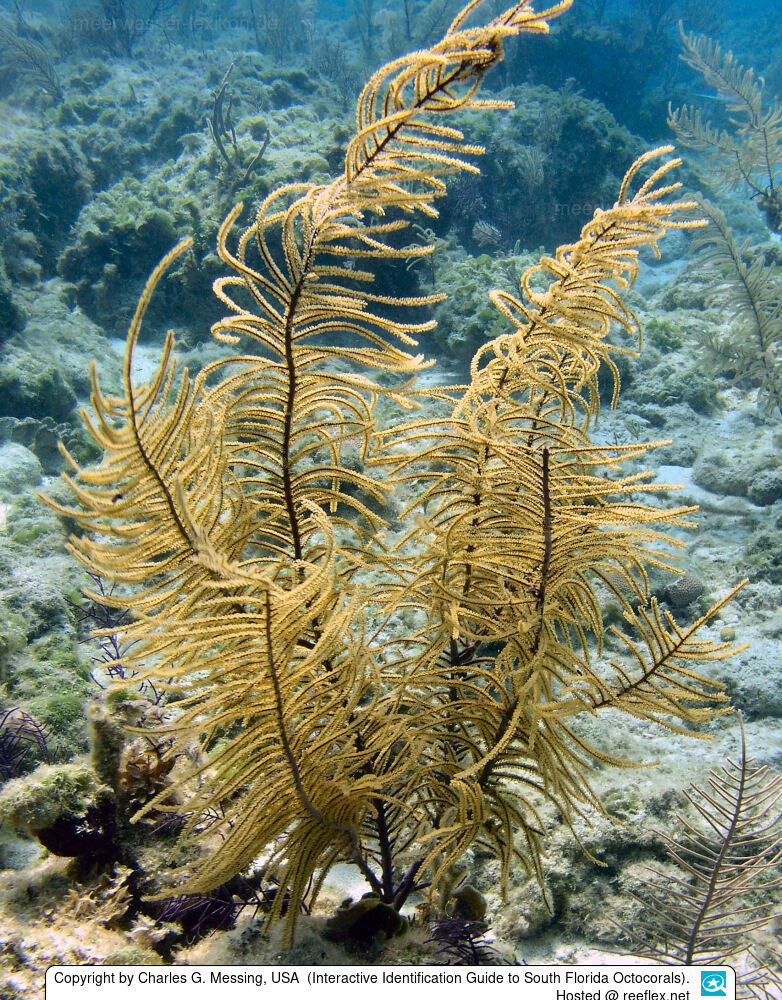Info
The branchlets long, slightly flattened, tapered, and 1.5-2.5 mm in diameter.
The gorgonian produces copious amounts of mucus.
Recommendation - the coral should be kept in a species-specific tank.
Feeding
Gorgonians do not have zooxanthellae and do not live off light. Azooxanthellate gorgonians do not host symbiotic algae that produce nutrients and energy through photosynthesis.
The pumps should be switched off before feeding. In order for the gorgonian to survive in the aquarium, each individual polyp must be fed sufficiently, i.e. daily or 3-4 times a week. Without feeding, the gorgonian will not survive in the aquarium. The polyps need a certain amount of time to absorb the food (granules or dust food (Ultramarin, Cyclop Eeze) or frozen food (lobster eggs, mysis)). If shrimp and fish are present, they will try to steal the food, so it is essential to feed these cohabitants beforehand.
Newly introduced gorgonian sticks can be stimulated with a liquid food, e.g., PolypLab Polyp, to encourage the individual polyps to open. Only then can feeding be carried out.
The better the individual polyps take up the food provided, the better the growth and reproduction rates will be.
Azooxanthellate corals eat suspensions, marine snow, microplankton, and other organic matter, which is their natural food.
Color:
Commonly purple to violet, occasionally pale yellow.
Habitat:
This coral lives in most reef environments, from shallow hard bottoms, patch reefs to deep clear water reeds along drop-offs.
Synonyms:
Gorgonia americana Gmelin, 1791
Pseudopterogorgia americana (Gmelin, 1791)
Pterogorgia ellisiana Milne-Edwards & Haime, 1857
Very special thanks for the first photo of Eunicea laxispica to Prof. Dr. Charles Sheppard, UK.
Please have a look on Prof. Sheppards homepage "Coralpedia" too: https://coralpedia.bio.warwick.ac.uk/en/about







 Prof. Dr. Charles G. Messing, (†), USA
Prof. Dr. Charles G. Messing, (†), USA








